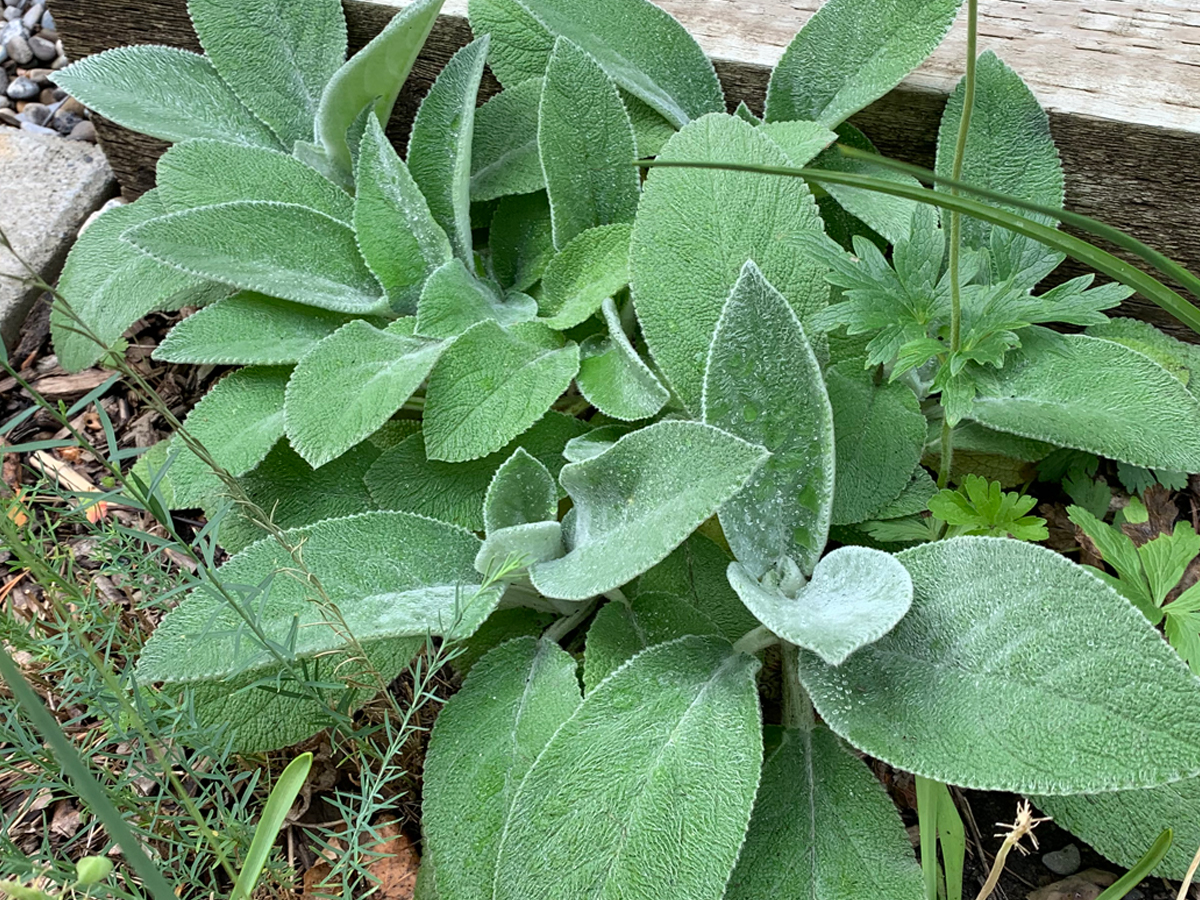A plant you can touch!

Photo by Deborah Maier
Soft and fuzzy, white and green, lamp-ear-shaped leaves are the identifying features of Stachys byzantine, a plant commonly called lamb’s-ears.
Having never caressed a lamb’s ear, I cannot vouch for a similar feel between the plant and the animal, but I can say that the downy softness does remind me of puppy fur. This tactile property of the plant makes it a popular addition to gardens visited by children, though I think we can all appreciate its velvety softness.
The layer of white over the green of the leaf, giving it a silvery look and the soft texture, is caused by fine lanate hairs, known as trichomes. Just like hairs on animals, trichomes provide protection to a plant.
Trichomes can reflect sunlight, provide insulation, reduce evaporation, provide an obstacle to hungry insects, and make the plant unpalatable to herbivores. In fact, worth noting by Calgary gardeners, lamb’s-ears, with their fuzzy leaves, are deer and rabbit resistant.
The soft green of young leaves reminds me of the sugar-coated, leaf-shaped, mint gummy candy. This seems appropriate since Stachys byzantine is a member of the mint family (Lamiaceae). As the plant ages, it takes on a more silvery-white appearance.
The reflecting and insulating protection provided by the hairs that give the plant its colour, means that Stachys byzantine can be planted in full sun, in some of our harshest summer conditions (though it will also tolerate partial shade). It can be grown in rock gardens, close to roadways and sidewalks, and along the edges of border gardens—in locations that are hot and dry.
Once the plant is established, which can take up to three years, it is drought-tolerant and should survive on rainfall alone.
Some gardeners find Lamb’s-ears hard to grow, while others think it’s taking over their garden. What makes for success or failure are the growing conditions. It is a great plant for a well-drained, full sun, south-facing location. The soil should not be too fertile.
These conditions can be inhospitable to other plants so there is little competition for space, and it will spread. This is great if you are using it in a location that is too challenging to grow other plants. However, it’s ability to spread when the conditions are right, is what can be overwhelming for some gardeners.
Paramount to its survival is good drainage. Leaving the plant in constant moisture invites crown rot, especially if temperatures are cool. In the Calgary area, Lamb’s-ears may be lost in the early spring if water from snowmelt pools where they grow and keeps it wet.
In warmer regions, stachys byzantina is an evergreen plant. It will keep its leaves all winter long. Here, over winter, the leaves dry out. In the spring to clean it up, I gently run my fingers through the leaves to shake the dry ones off. Afterwards, the plant will sprout new leaves and fill in quickly,
While grown primarily for its foliage, it has flower stalks that start appearing in July. Many people remove the stalks as they consider them unattractive, but I think the periscope fuzzy club of flowers it grows is interesting. The flowers attract pollinators. In my garden, a flower that keeps beneficial insects happy is worth keeping.
Its colour, hardiness, texture (both visually and physically), low-water needs, and drought tolerance is why lamb’s-ear is one of the plants selected for the YardSmart Garden Bed Design for Full Sun guide, created by the City of Calgary in partnership with the Calgary Horticultural Society.
In the guide, lamb’s-ears is placed along the edge of a bed filled with Stella d’Oro daylilies, Baptisia, Salvia, snow pavement roses, Siberian irises, purple coneflowers, and a feature plant peony. You can download a copy of the guide from The City’s (Calgary.ca) or the Society’s (calhort.org) websites.
Lamb’s-ears is just one of the attractive and interesting plants that can be grown in Calgary while being water-wise. Using plants that are resilient and can handle Calgary’s variable weather will make gardening here more enjoyable. To learn more about gardening in the Calgary area, visit calhort.org.
